#cajun history
Explore tagged Tumblr posts
Text
Will be saying this till I die that CREOLE DOES NOT MEAN BLACK/MIXED/NATIVE AND CAJUN DOES NOT MEAN YT ‼️‼️ Cajuns are a subset of Louisiana Creole (so all Cajuns are Creoles, not all Creoles are Cajuns. For the sake of this post though if I say “creoles” I mean non-Cajun Creoles) and the only difference between them is that Cajuns were typically dirt poor and lived in the bayou, while Creoles were typically wealthier and lived in the city and urban areas. There are black Cajuns, biracial Cajuns, and iirc nearly half of all Cajuns are native. There are also white Creoles. Cajun isn’t just “Creole but white” it’s a whole culture and community involving a lot of different ethnicities, and is very intertwined with southern indigenous cultures because of the proximity of the communities. The racial divide between Cajuns vs Creoles was caused by the sudden influx of white supremacy when Louisiana became U.S. territory- prior to that, black Creoles were legally considered white, and had all the privileges and power as a white person. (This is not to say it was some race-blind utopia, slavery was absolutely still a thing and in fact some wealthy Creoles owned slaves. Colorism was also a thing among Creoles. Your proximity to whiteness was largely dependant on your wealth and status.)
When the Louisiana purchase happened, American racism was then introduced to Creole and Cajun communities, and it tore through them really terribly. Subsequently, bc of a lot of shit, black/mixed people were categorized as Creoles, and so white people were categorized as Cajuns.
(This didn’t really stop the hatred of Cajuns and Cajun communities from white americans however, a mix of Cajuns being largely native and Cajuns being poor people who lived in the Bayou made them unpopular among “polite” white american society. Though it was harder to enforce any oppressive hate against them because the Cajuns were extremely isolated in the Bayou, tight knit, and had a reputation for being “dangerous” towards those who tried to come for them.)
#cajun#louisiana creole#indigenous history#cajun history#The common consensus among even some historians that “oh Cajuns are white Creoles aren’t” really kills me#Cajun history is indigenous history erasing that and whitewashing it is so shitty I hate when ppl do dat
41 notes
·
View notes
Text
Researching modern cajun/louisiana culture for a WIP and getting derailed by the insanity of the new iberia haircut meme
youtube
And I...what if Gene...🤐🫥

#eugene roe#us american culture and history is wild to me#but I need lower class cajun Gene so bad actually#swamp boy gene incoming#as soon as I've figured out how to write that#once again my clegan fic is derailed by baberoe#so sorry about this
25 notes
·
View notes
Text
The fact there's a historic snow storm for my area tomorrow and I know for a Fact my Cajun sensibilities cannot handle that cold is going to turn me into chapter 3 Richard Papen real fast
#mo.txt#the secret history#academia#chaotic academia#dark academia#cajun#snow#more like sneaux#winter
9 notes
·
View notes
Text
French Quarter, New Orleans, Louisiana, USA...






#hiking#travel#new orleans#louisiana#french quarter#jackson square#andrew jackson#usa#america#north america#cajun country#french culture#american culture#back alley#nighttime photography#walking tour#urban life#urban landscape#mardi gras#balcony#american history#southern hospitality#beignets#american folklore#folklore#haunted#ghost stories#louisiana creole#jazz#louis armstrong
9 notes
·
View notes
Text
trying to draw the interior of eugene’s childhood bedroom is proving to be so difficult. what the fuck did a bedroom look like in a house in bayou chene post depression. so far i have The Most Pathetic metal bed frame and a wooden cross.
seriously like would it have wallpaper? drywall at all? or are the walls wooden planks like the exterior. are there screens over the windows? what do the windows look like?
louisiana-centric historians please Help Me
#bayou#louisiana#historians#history#please help#band of brothers#hbowar#band of brothers hbo#eugene roe#gene roe#doc roe#cajun country
8 notes
·
View notes
Text
Types of Witches in the Bayou: The Traiteur
traiteur: a Cajun or Creole healer whose gifts were bestowed upon them by a higher being either at birth, through biological inheritance, or in apprenticeship
The traiteur is just as mystical as she is a practical fixture of the community. People in the community appear on her doorstep at the lowest moments of their life when they have nowhere to turn, just as they drive in from hours out of town for her otherworldly skills. The traiteur does not accept payment for her services. She was designated as a tool of God, and to expect financial benefit is to taint her practice and destroy its sanctity.
A Brief Look at the History and Practices:
Traiteur's traditionally believe that their powers not only come from God but that their practice is in line with the Catohlic faith. However, this is not always true despite being reported as factual in most spaces where information is available online.
They can treat people with their hands, with blessed medicine made by those hands, or through prayer.
The proof is in the innocent - many traiteurs (who still exist and practice today) have a track record of healing newborns and young infants, who would not be vulnerable to the psychosomatic "placebo" effect or other phenomenon.
Different traiteurs prescribe to different practices, but the vast majority treat topical wounds and ailments but are not suited to treating more complex medical maladies.
Patients of traiteurs report feeling that the healers often also treat their burdens of mind and spirit, perhaps suggesting that the practice is related to the theory that our heart can affect the afflictions of our bodies.
10 notes
·
View notes
Text
Culinary Cousins: Louisiana's Culinary Kaleidoscope of Cajun and Creole
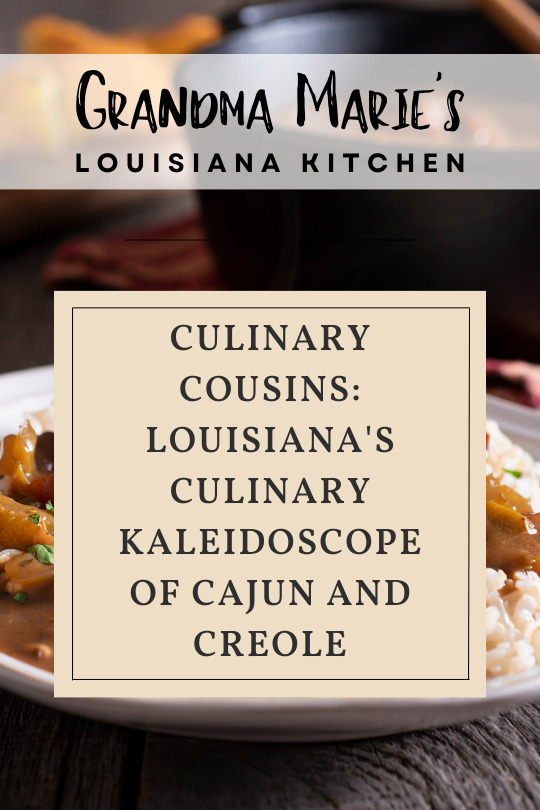
Welcome back to our Louisiana kitchen, cher! Let’s delve into a topic close to my heart – the captivating world of Cajun and Creole cuisines. While these two culinary traditions share the same vibrant home, there are nuances that make each one a unique celebration of flavor.
Similarities
Most cousins share some traits and us Cajuns and Creoles? Well, now, we aren’t that different.
Rich Heritage Both Cajun and Creole cuisines are born from the rich cultural tapestry of Louisiana. They intertwine elements from French, Spanish, African, and Native American traditions, creating a delicious mosaic that reflects our diverse history.
Holy Trinity The "Holy Trinity" – a medley of bell peppers, onions, and celery in the heart of both cuisines. This aromatic trio serves as the flavor foundation for many dishes, providing depth and character to Cajun gumbos and Creole étouffées.
Rice Is A Staple Rice is a fundamental component in both Cajun and Creole cooking. Whether it's a bed for gumbo or jambalaya or a side dish, rice ties these culinary traditions together.
Differences
Everyone has their differences, even something as small as ordering a Dr. Pepper instead of a Big Shot. (It happens.)
Geographic Roots One key distinction lies in their geographic roots. Cajun cuisine hails from the rural areas of Louisiana, particularly the Acadiana region, while Creole cuisine originates in the urban centers, primarily New Orleans.
Influences and Ingredients Cajun cuisine often leans towards heartier, rustic fare with influences from the French countryside. Game meats, seafood, and ingredients like andouille sausage are staples. On the other hand, Creole cuisine showcases more refined flavors, often incorporating tomatoes, fine herbs, and a variety of spices.
Cooking Techniques The cooking techniques also set them apart. Due to their rural roots, Cajun dishes are often one-pot wonders simmered to develop robust flavors. In Creole cuisine, you might find more intricate sauces and delicate preparations, showcasing the finesse of French culinary techniques.
Global Influences in Creole Being born in a melting pot like New Orleans, Creole cuisine has been influenced by a broader array of international flavors. Spanish, African, Caribbean, and Italian influences are more pronounced in Creole dishes, offering a diverse and eclectic culinary experience.
In the end, both Cajun and Creole cuisines share a love for bold, flavorful dishes that bring people together. Whether you're simmering a gumbo on the bayou or enjoying a Creole-inspired feast in the heart of New Orleans, you're partaking in the magic of Louisiana's culinary heritage.
Jambalaya: A Culinary Symphony
The iconic Jambalaya is one dish that is beloved by both Cajun and Creole communities. Jambalaya reflects the diverse cultural influences and rich culinary heritage of Louisiana. While there may be variations in the recipes between Cajun and Creole versions, the heart of the dish remains a shared love for bold flavors and hearty, one-pot creations.
Cajun Jambalaya
Ingredients Typically, it includes andouille sausage, chicken, and sometimes game meats like rabbit or alligator. It's seasoned with a robust blend of spices, and the trinity of onions, bell peppers, and celery forms the flavor base.
Cooking Style Cajun jambalaya often features a brown roux for added depth and a rustic, hearty feel. It's a flavorful dish that reflects the down-to-earth, rural roots of Cajun cuisine.
Creole Jambalaya
Ingredients Creole jambalaya may include a mix of proteins like shrimp, ham, and smoked sausage. Tomatoes are a distinguishing feature, giving the dish a slightly reddish hue. The trinity is present, but green bell peppers are more common.
Cooking Style Creole jambalaya tends to have a lighter, tomato-based sauce. The cooking style aligns more with the sophisticated techniques often associated with Creole cuisine.
Despite these variations, the essence of jambalaya as a communal, flavorful dish that brings people together is a shared sentiment in both Cajun and Creole communities.
It truly reflects Louisiana's cultural melting pot, where diverse influences meld into a harmonious culinary symphony.
Whether enjoyed at a family gathering, a festival, or a casual dinner, jambalaya embodies the spirit of Louisiana's love for good food, good company, and good times.
Cajun Jambalaya Recipe
This Jambalaya is a meal that brings folks together, so gather your loved ones and savor the taste of Louisiana's heart and soul.
Ingredients
1 lb andouille sausage, sliced
1 lb boneless, skinless chicken thighs cut into bite-sized pieces
1 large onion, finely chopped
1 bell pepper, diced
3 celery stalks, chopped
3 cloves garlic, minced
1 can (14 oz) diced tomatoes
1 cup long-grain white rice
2 cups chicken broth
2 teaspoons Cajun seasoning (adjust to taste)
1 teaspoon dried thyme
1 teaspoon dried oregano
Salt and black pepper to taste
Green onions, chopped, for garnish
Fresh parsley, chopped, for garnish
Instructions
Prepare Ingredients
Slice the andouille sausage.
Cut chicken thighs into bite-sized pieces.
Chop onion, bell pepper, celery, garlic, green onions, and parsley.
Sear Meats
In a large, heavy pot or Dutch oven, sear the andouille sausage over medium-high heat until browned. Remove and set aside.
In the same pot, add the chicken pieces and brown them on all sides. Remove and set aside.
Sauté Vegetables
In the same pot, add a bit of oil if needed. Sauté the onion, bell pepper, celery, and garlic until softened.
Build Flavors
Stir in the diced tomatoes and cook for a few minutes.
Add Cajun seasoning, dried thyme, and dried oregano. Season with salt and black pepper to taste.
Combine Ingredients
Return the seared andouille sausage and chicken to the pot.
Add the rice and stir to coat the rice with the flavorful mixture.
Simmer
Pour in the chicken broth and bring the mixture to a boil.
Reduce heat to low, cover the pot, and let it simmer for 20-25 minutes or until the rice is cooked and has absorbed the liquid. Stir occasionally to prevent sticking.
Serve
Once the rice is tender, remove the pot from heat.
Garnish with chopped green onions and fresh parsley.
Enjoy
Serve hot, and enjoy the flavorful goodness of Cajun Jambalaya!
Nutritional Information
(Per Serving, Assuming 6 Servings)
Remember that the nutritional values are approximate and can vary based on specific ingredients and portion sizes. The values provided are for one serving of Cajun Jambalaya, assuming the recipe makes approximately six servings.
Calories: Approximately 450-500 calories
Total Fat: 20-25g
Saturated Fat: 7-9g
Trans Fat: 0g
Cholesterol: 80-90mg
Sodium: 1200-1400mg
Total Carbohydrates: 35-40g
Dietary Fiber: 2-3g
Sugars: 3-4g
Protein: 20-25g
Note
The nutritional values can vary based on the specific brands and types of andouille sausage, chicken, rice, and other ingredients used.
Adjustments, such as using leaner sausage or brown rice, can impact the nutritional content.
For precise nutritional information, especially if you have specific dietary considerations, it's advisable to use a nutrition calculator with the exact brands and quantities of ingredients you use.
Until next time, I wish you warmth and flavor!
#grandmamarie#grandmamaries#grandmamarieslouisianakitchen#cajun#creole#cooking#recipe#recipes#culture#history#heritage#jambalaya#jambalaya recipe
17 notes
·
View notes
Text
On June 15, 1939 Zora Neale Hurston recorded "Uncle Bud," a bawdy song found all over the South that went on to become a Cajun-Creole Zydeco classic. Hurston explains, "'Uncle Bud' is not a work song. It is a sort of social song for amusement." One of the first documented instances of the song in print appeared as "O-Bud!" in a Texas Folklore Society publication in 1928, collected in Virginia ca. 1924, but Hurston likely first heard the song from black working men while she was doing folklore field work in logging and terpantine camps in Louisiana. It's an invaluable audible artifact from almost a century ago. And it's quite raunchy to say the least! At the end, either Stetson Kennedy or Hurbert Halpert, the Library of Congress folk collectors in that session, say with an audible grin, "I think that's a very valuable contribution to scientific recording."
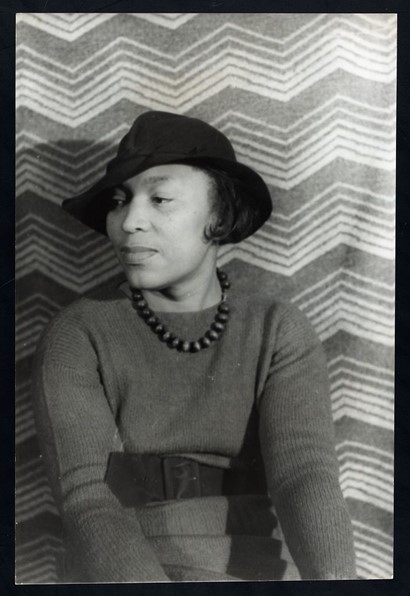
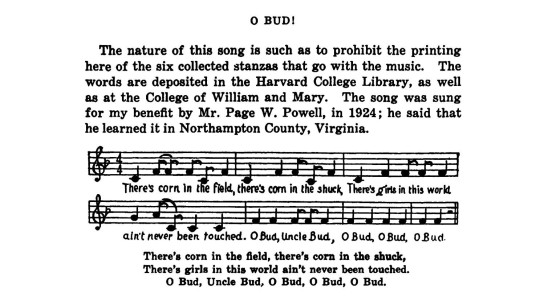
#zora neale hurston#folklore#folk music#black history#music#music history#musicology#literature#african american literature#african diaspora#zydeco#cajun music#louisiana creole#boozoo chavis#rockin' sidney#sonny terry#Spotify
8 notes
·
View notes
Text
laissez le bon temps rouler…
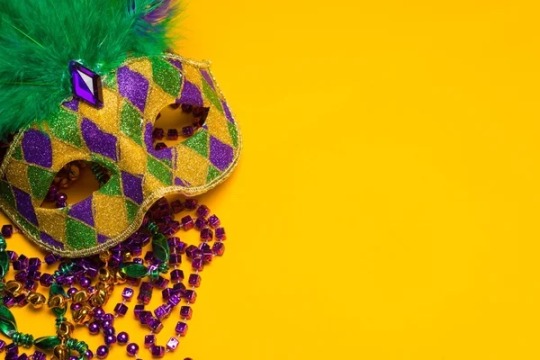
youtube
#meerathehistorian#mardis gras#new orleans#nola#music history#music#history#cajun culture#cajun#creole#louisiana creole#french history#Cajun French#creole french#languages#language history#historical references#queue are made by history
8 notes
·
View notes
Text

One of my favorite places in NOLA, New Orleans Museum of Art.
#new orleans#nola#louisiana#french quarter#travel#mardi gras#cajun#creole#new orleans city park#museum#art#fine art#modern art#history#art history#adventure#explore#vacation#traveling#travel photography#holiday#october#fall#autumn#taylor swift#the eras tour
3 notes
·
View notes
Text
Day of Commemoration for the Acadian Expulsion
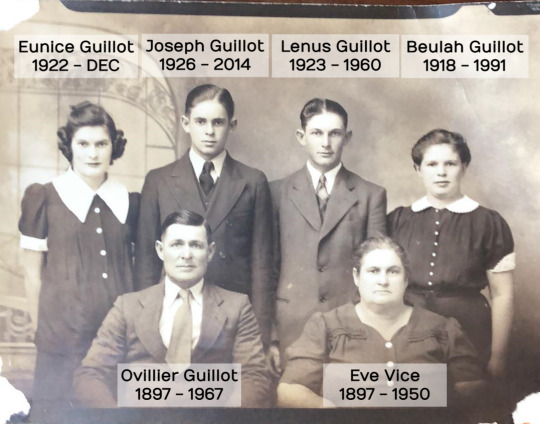
Image Description: A black and white portrait of the Ovillier Guillot and Eve Vice family, circa the early-to-mid 1900s. Top (children), left to right: Eunice Guillot 1922-Dec; Joseph Guillot 1926-2014; Lenus Guillot 1923-1960; Beulah Guillot 1918-1991. Bottom (parents), left to right: Ovillier Guillot 1897-1967; Eve Vice 1897-1950.
The two daughters wear similar dark, button-down dresses with white doll collars. The mother wears a dark, button-down open-collar blouse or dress. The two sons and the father wear white dress shirts covered by fastened suit jackets complete with ties.
Image by [[TBD]].
— — — — — — — — —
Pictured above is my 3rd great-uncle Ovillier Guillot and his family. He is the 4th great-grandson of Jean Baptiste Guillot.
Today is the Day of Commemoration for the Acadian Expulsion.
While I have quite a few direct ancestors who lived in Nova Scotia and ended up in France at the time of the expulsion, there's only one family unit that I have been able to confirm was expelled.
That was the family of my 8th great-grandfather Jean Baptiste Guillot, born in Acadia in 1720 with his body given to the Atlantic Ocean in 1758. His family was expelled from Cobequid, Acadia, Nova Scotia to France during the brutal "Great Expulsion" by the British, who wanted to squelch any potential threats from the Acadians and the Mi'kmaq during the French and Indian War.
His son (my 7th great-grandfather) Charles Olivier Miquel Guillot was only 13 in 1758 when they had to take the long, arduous 75-day journey to France. His father Jean, along with 4 of his brothers, never made it off of the ship.
Charles grew up in France where he married and had 3 children of his own. They left France in 1785 to board one of the seven ships paid for by Spain, Le Saint-Rémi, to take them to Lafourche Parish, Louisiana.
Many members of the Wabanaki Confederacy (I believe predominately it was the Mi'kmaq militia), in addition to other affiliated Indigenous tribes and Acadians, who rallied a resistance were slaughtered or expelled. They refused to swear loyalty to the British crown and surrender to British colonists, refused to convert from Catholicism to Protestantism, and refused to allow themselves to be displaced without a fight. Numerous battles took place to stop the deportation with wins and losses across the board.
While no one has one lineage, I was raised as a proud Cajun despite having often felt ashamed of being Cajun for various reasons (like my accent). I even tried my hardest over twelve years to banish anything that could link me to my roots, not knowing the history behind a part of my ethnicity and culture.
Digging into my ancestry has been a wild ride, and there were many things found within my lineages that were not honorable in any way, but this chunk of my history? This has made me proud to be Cajun again.
I wish I had respected it more when I was still able to be immersed in it. I wish I had asked my pawpaw to tell me more stories. I wish I had kept up with Cajun French (AKA Louisiana French). I wish I hadn't let my cultural heritage fall through my fingers.
Many blessings to those who fought and lost their lives against the British colonists in an attempt to secure the freedom of not only themselves but of future generations to come.
[Disclaimer: I am still only beginning to educate myself about this event and am utilizing my current understanding of how events unfolded and who was involved. I apologize in advance for any misconceptions or misinformation regarding the historical accuracy of my comments.]
#Nova Scotia#France#Canada#Acadia#Acadian#Acadian Expulsion#Day of Commemoration#History#Family History#Family#Genealogy#Genealogy Blog#Twisting Tree#Twisting Tree Ancestry#Ancestry#Ancestry Blog#Cajun#Le Saint Remi#Day of Commemoration for the Acadian Expulsion#Guillot#Guillot Family#Louisiana#Louisiane#Acadie à la Louisiane#Acadie#Mi'kmaq#Mi'kmaw#French and Indian War#Pawpaw#Cajun French
7 notes
·
View notes
Text
wish there were more ndn creole blogs on here, it’s all recipes and history pages, like we’re still around and being a creole ndn is way different to a non creole ndn experience, I know we’re around cause I met one a few weeks ago irl just by chance, but everyone acts like we’re either only in Louisiana and not worth acknowledging or just gone altogether.
#lousiana creole#Pls we have really interesting history#Ppl only talk about us when they want to prove something#It’s true most creoles r in Louisiana but clearly not all of us#Also ppl only ever consider creoles and cajuns as literally black and white#Cajuns are a subset creoles and cajuns are also often mixed. Like around 40% of all Cajuns are ndn.#Creoles can be mostly native creoles can be mostly white Cajuns can be mostly black#Most of us r all a lil mixed but it’s not as simple as everyone else makes it out to be#Issa whole culture and ethnic group that deserves recognition#Like my family left Louisiana we’re cut off from everyone else bc of family drama we live far away but we still keep our culture close#Or at least my grandpa did but you still see it echoing#idk sorry i’m just rambling now#But we used to be huge before Louisiana became America#American White supremacy fucked us over and our language and culture were all attempted to be wiped out#They forcefully segregated us that’s why now Cajuns are considered white Creoles are consider mixed or black#Makes me sad to see ppl treating us like we’re gone when we’re not
4 notes
·
View notes
Text
Lafayette: A Feast for Spirit & Soul
Festival Acadiens et Creoles, held in Lafayette, Louisiana, in October, is a non-stop party, a celebration of a unique culture!

View On WordPress
#Cajun and Creole Food#Cajun Cooking#city parks#Festival Acadiens et Creoles#French culture#Good Food#History#Living History Park#Louisiana Travel#Moncus Park#Music Jams#October Festival#Vermillionville#Zydeco Music
3 notes
·
View notes
Video
youtube
This 1700s Gumbo has ALL THE THINGS | Ancient Recipes With Sohla
Sohla is cooking up an old school Creole favorite - a gumbo recipe from the 1700s that contains 4 types of protein in one pot. This delicious stew combines West African and Native American cultural traditions with French and Spanish ingredients, plus it’s the official cuisine of Louisiana. Learn more about it’s history in this episode of Ancient Recipes With Sohla!
12 notes
·
View notes
Audio
alright fellas do we think this is hozier on this for real bcus i cant tell
4 notes
·
View notes
Text
1 note
·
View note